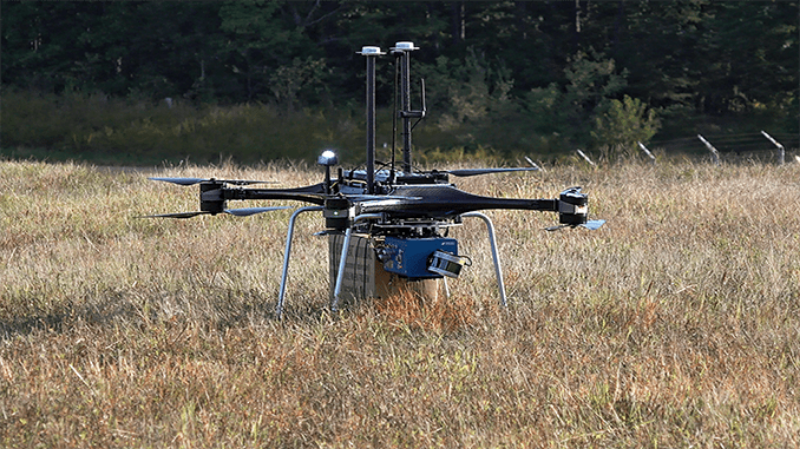The Pittsburgh-based company, Near Earth Autonomy (Near Earth) has developed unmanned aerial contingency management systems as part of a Joint Capabilities Technology (JCTD) Unmanned Logistics Systems Aerial (ULS-A) Demonstration. Near Earth’s technology offers obstacle avoidance for safe flight and landing enabling reliable cargo delivery in dynamic environments.
Autonomous resupply for US military is flying into realityIn collaboration with the Army and Marines, from September 11-27, 2019 16 active-duty Army soldiers and Marines used Near Earth’s technology to safely execute 64 resupply missions in an operational demonstration at Fort AP Hill, Virginia. The demonstration ended year 1 of the 3-year JCTD program.
Joe Fagan, ULS-A Operational Manager’s describes the significance of the achievement,
“This was the first opportunity for the military users to interact with the ULS-A capability. Whether they were uploading autonomy packages, downloading data, or operating as safety pilots, I was continually impressed with the breadth and depth of the Near Earth Autonomy Team.”
Robert McKinney, Technical Manager for the Unmanned Logistics Systems Air (ULS-A) JCTD, Marine Corp Warfighter Lab said,
“From a logistics standpoint, the Marines are looking to deliver small to medium weight supplies like water, beans, and ammunition to forward operating bases. We’re looking at fully autonomous rather than just manually operated vehicles. Without a man in the loop, losses are minimal and there are no humans at risk.”
In time, autonomous resupply will support ground convoys and manned aircraft that today are at risk of attack when bringing warfighters the supplies they need to conduct their missions. Master Gunnery Sergeant Ulrich said,
“We can apply this capability and really help out the warfighter. I see a lot of applications in delivering in austere environments. In this way we’ll keep trucks off the road, we’ll keep Marines off the road and use technology to our advantage so that our troops can get what they need when they need it.” The technology being used by warfighters marks a historic milestone in bringing autonomous mobility into reality for the US military. American defense leadership is actively exploring innovative new technologies that will give them a significant advantage over less advanced adversaries. Master Gunnery Sergeant Ulrich continued, “I think the Marines are adapting to the platforms because it is generationally relevant. The Marines of today look at it as something that enables them to do their job in a streamlined way. The training is minimal enough to allow them to adapt quickly. It’s able to help them stay out of the firefight themselves and they’ve responded by executing almost flawlessly.
I see the future of ULS-A eventually evolving into a medium-size platform that’s able to provide a diverse distribution portfolio. Within the JCTD year two and three, we’ll be looking at bigger, faster, stronger, platforms, meaning more battery life, more distribution capability, and overall increasing the ability to keep the warfighter in the fight.”
The military plans to continue collaborating with Near Earth Autonomy to expand their autonomous resupply capabilities.
Source: Press Release

